Foracort Inhaler 6/200 mcg is a prescription medicine formulated to manage and prevent symptoms of asthma and chronic obstructive pulmonary disease (COPD), conditions that cause breathing difficulties and airway inflammation. The inhaler contains two active pharmaceutical ingredients, Formoterol and Budesonide.
- Formoterol is a long-acting bronchodilator that works by relaxing the muscles in the airways, allowing easier airflow into the lungs.
- Budesonide is a corticosteroid that helps to reduce inflammation and swelling in the airways, preventing asthma attacks and improving overall lung function.
Together, these components help to control chronic symptoms, prevent wheezing and shortness of breath, and maintain clearer, healthier airways for improved respiratory comfort.
Key Features
| About | |
|---|---|
| Drug Class | Respiratory agents |
| Subclass | Anti-asthmatic and Bronchodilator combination |
| Product Details | |
|---|---|
| Composition | Active ingredients: Formoterol Fumarate (6 mcg), Budesonide (200 mcg) Inactive ingredients: Lactose monohydrate |
| Packaging Type | Inhaler |
| Pack Size | 120 metered doses |
| Dosage | 1-2 inhalations twice a day |
| Therapeutic class | Bronchodilators and anti-inflammatory agents |
| Action Class | Long-acting beta2-adrenergic agonist (LABA) and Inhaled Corticosteroid |
| Chemical class | Beta2-adrenergic agonist, Corticosteroid |
| Manufacturer | Macleods Pharmaceutical limited |
| Shelf Life | 2-3 years from the date of manufacturing |
| Usages | Treatment of Asthma and Chronic obstructive pulmonary disease |
| Country of Origin | India |
| Storage | Store at room temperature (15-30°C), away from moisture and direct sunlight |
How does Foracort Inhaler 6/200 mcg work?
- Relaxing airway muscles: Formoterol, a long-acting bronchodilator, works by relaxing the muscles in the airways, making it easier to breathe and helping to relieve symptoms such as wheezing and shortness of breath.
- Reducing airway inflammation: Budesonide, a corticosteroid, reduces inflammation, swelling, and irritation in the airways, preventing asthma attacks and maintaining open air passages.
- Improving breathing efficiency: The combined action of Formoterol and Budesonide helps to keep the airways open, enhances oxygen flow, and reduces the risk of asthma or COPD flare-ups.
Dosage
- Recommended dose: Usually 2 inhalations twice daily or as directed by your doctor.
- Usage guidance: Shake the inhaler well before each use. Rinse your mouth with water after inhalation to prevent oral fungal infections.
- Always follow your healthcare provider’s prescription and avoid sudden discontinuation without medical advice.
Uses
- Asthma: Long-term management of asthma symptoms such as wheezing, coughing, and breathlessness.
- Chronic Obstructive Pulmonary Disease (COPD): Helps manage symptoms like chest tightness and difficulty in breathing caused by chronic bronchitis or emphysema.
- Preventive therapy: Used to prevent asthma attacks and maintain stable lung function in individuals with chronic respiratory issues.
Side Effects
- Throat irritation or dryness
- Hoarseness of voice
- Cough
- Headache
- Tremors
- Nausea
- Oral fungal infection (thrush)
- Increased heart rate
- Muscle cramps
If any side effects persist or worsen, consult your doctor immediately.
Interactions
- Beta-blockers (e.g., Propranolol): May reduce the effectiveness of Formoterol and cause breathing difficulties.
- Diuretics: May increase the risk of low potassium levels when used together.
- Other bronchodilators: May enhance cardiovascular side effects like palpitations or tremors.
- Antifungal or antiviral medications (e.g., Ketoconazole, Ritonavir): Can increase Budesonide levels, raising the risk of side effects.
- MAO inhibitors (e.g., Phenelzine): May increase cardiovascular effects when combined with Formoterol.
Pharmacokinetics
The pharmacokinetics of Foracort Inhaler 6/200 mcg involve the absorption of Budesonide and Formoterol through the lungs, where they act locally. Budesonide undergoes significant first-pass metabolism in the liver, while Formoterol is rapidly absorbed and distributed to airway tissues. Both components exhibit a duration of action lasting up to 12 hours, supporting twice-daily dosing.
Precautions
- Allergies: Avoid use if allergic to Budesonide, Formoterol, or any components of the inhaler.
- Heart conditions: Use cautiously if you have heart rhythm problems, hypertension, or coronary artery disease.
- Infections: Corticosteroids can suppress the immune system—use with caution if you have active infections, such as tuberculosis or fungal infections.
- Diabetes: May increase blood sugar levels—monitor regularly if diabetic.
- Thyroid disorders: Use cautiously if you have hyperthyroidism.
- Pregnancy and breastfeeding: Consult your doctor before use; only use if the benefits outweigh the risks.
- Children: Should be used under strict medical supervision in children under 12 years.
- Rinsing mouth: Always rinse your mouth after each use to prevent oral thrush (fungal infection).
Conclusion
Foracort Inhaler 6/200 mcg is an effective combination medication for controlling asthma and COPD symptoms. By relaxing airway muscles and reducing inflammation, it provides long-lasting relief and improves breathing efficiency. However, consistent use as prescribed and adherence to precautions are essential to prevent side effects and maintain optimal lung health. Always consult your healthcare provider for proper inhaler technique, dosing schedule, and medical supervision while using Foracort Inhaler 6/200.
References
https://pubmed.ncbi.nlm.nih.gov/11217872/
https://www.ncbi.nlm.nih.gov/books/NBK563201/
FAQ’S
2) How should I use Foracort Inhaler correctly?
3) Can I use Foracort Inhaler during an asthma attack?
4) What should I do if I miss a dose?
5) Can Foracort Inhaler cause dependency or long-term side effects?

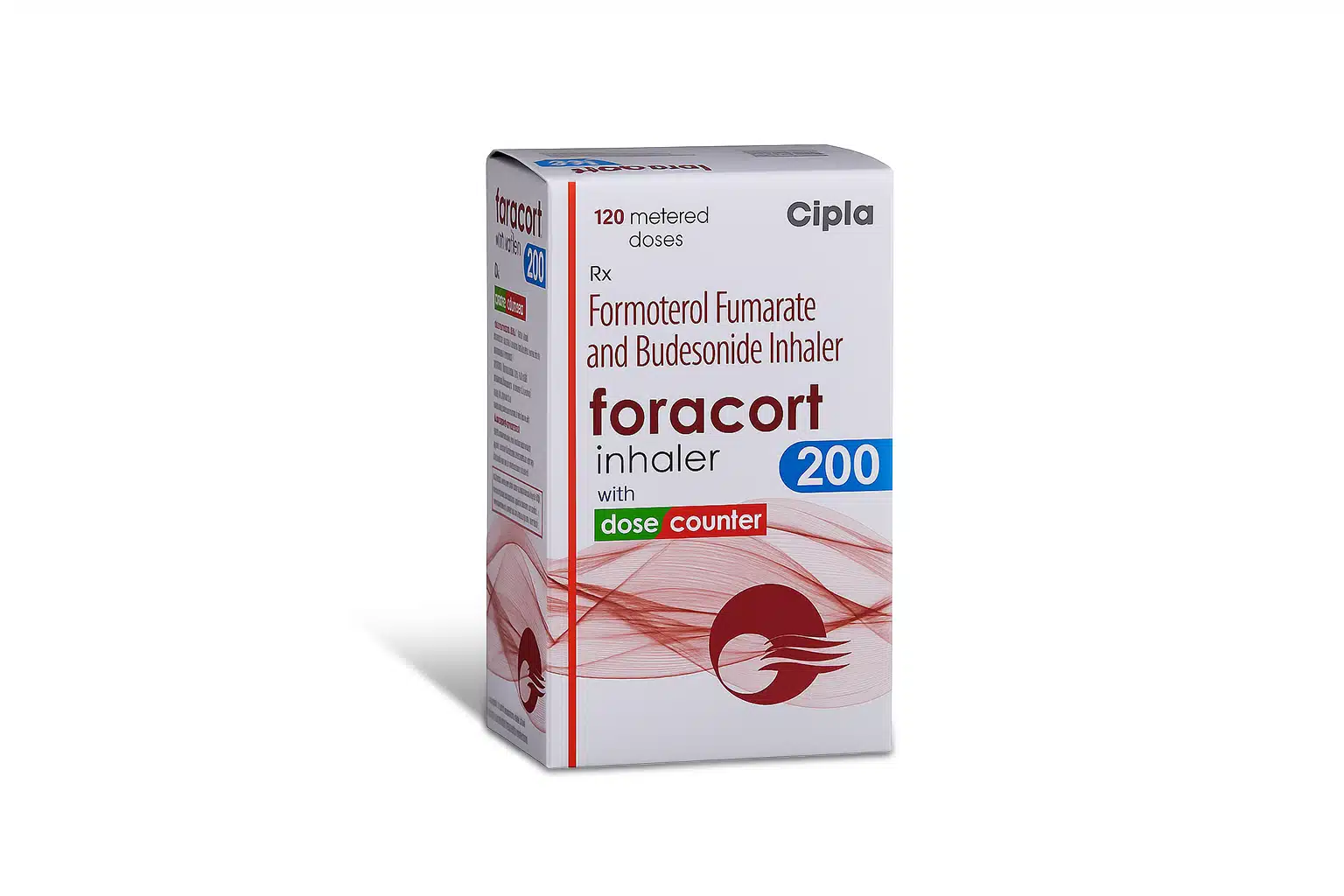
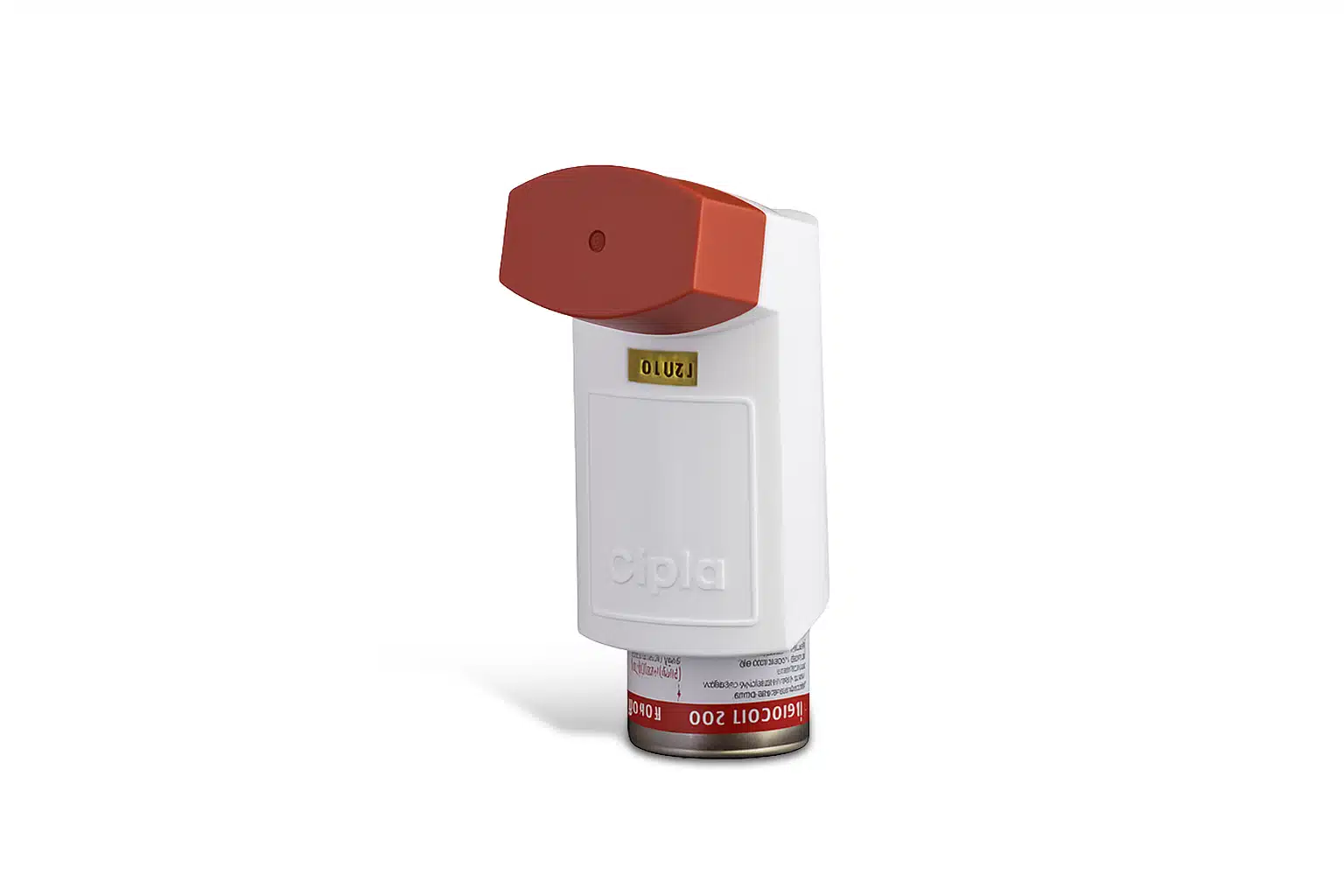
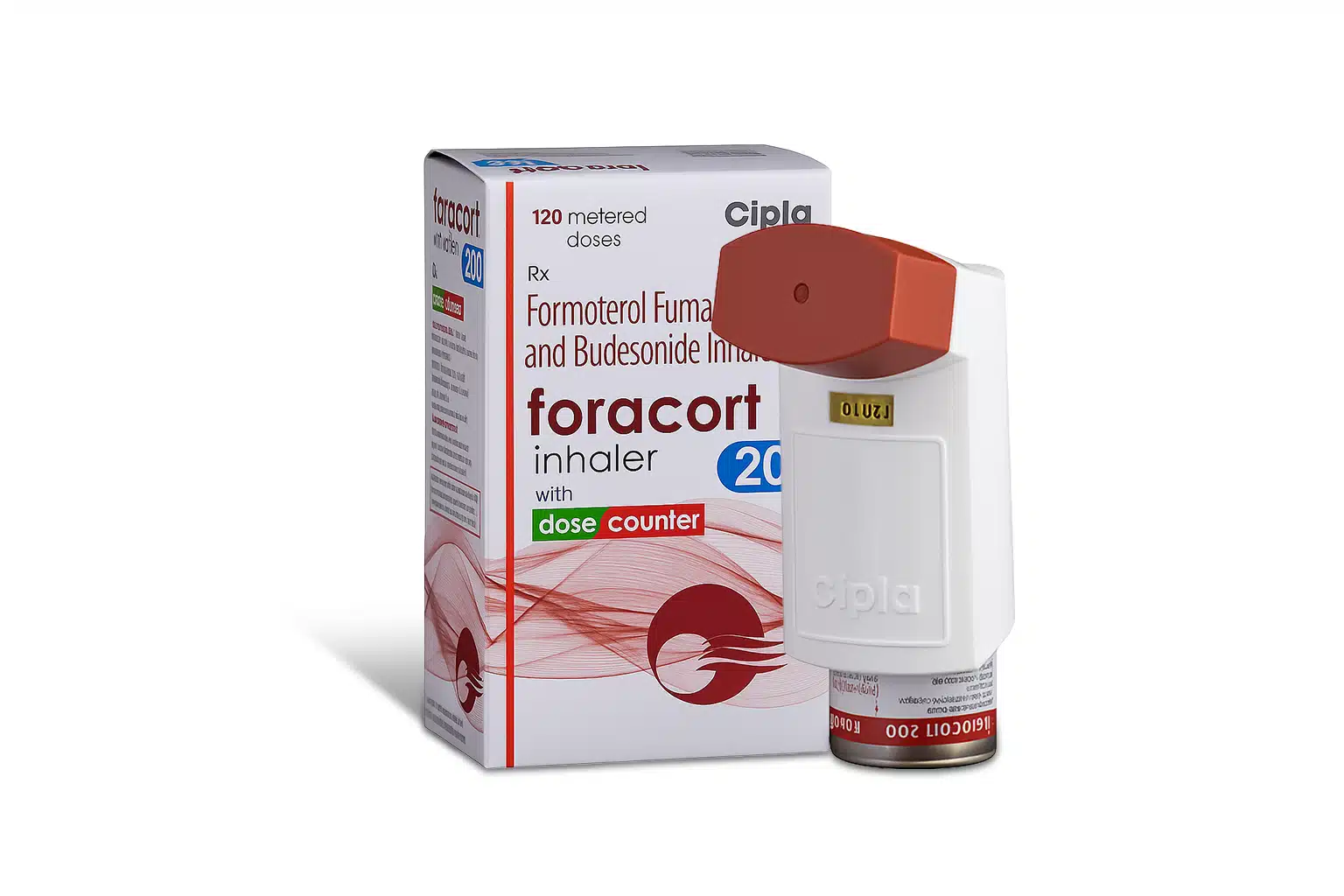
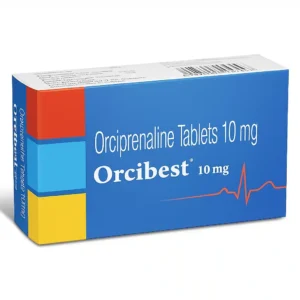
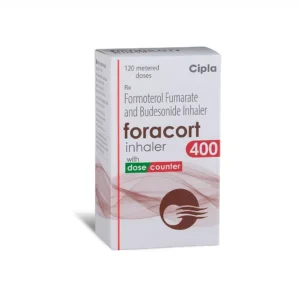
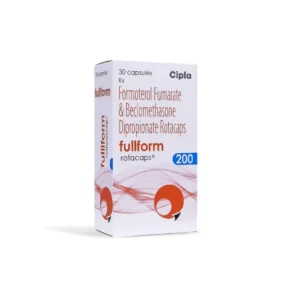
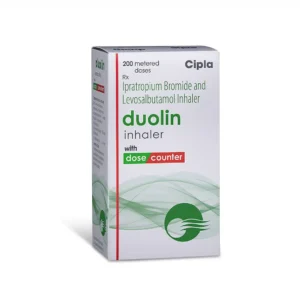
Roschelle –
Helps me breathe better during asthma attacks. Smooth inhalation, reliable